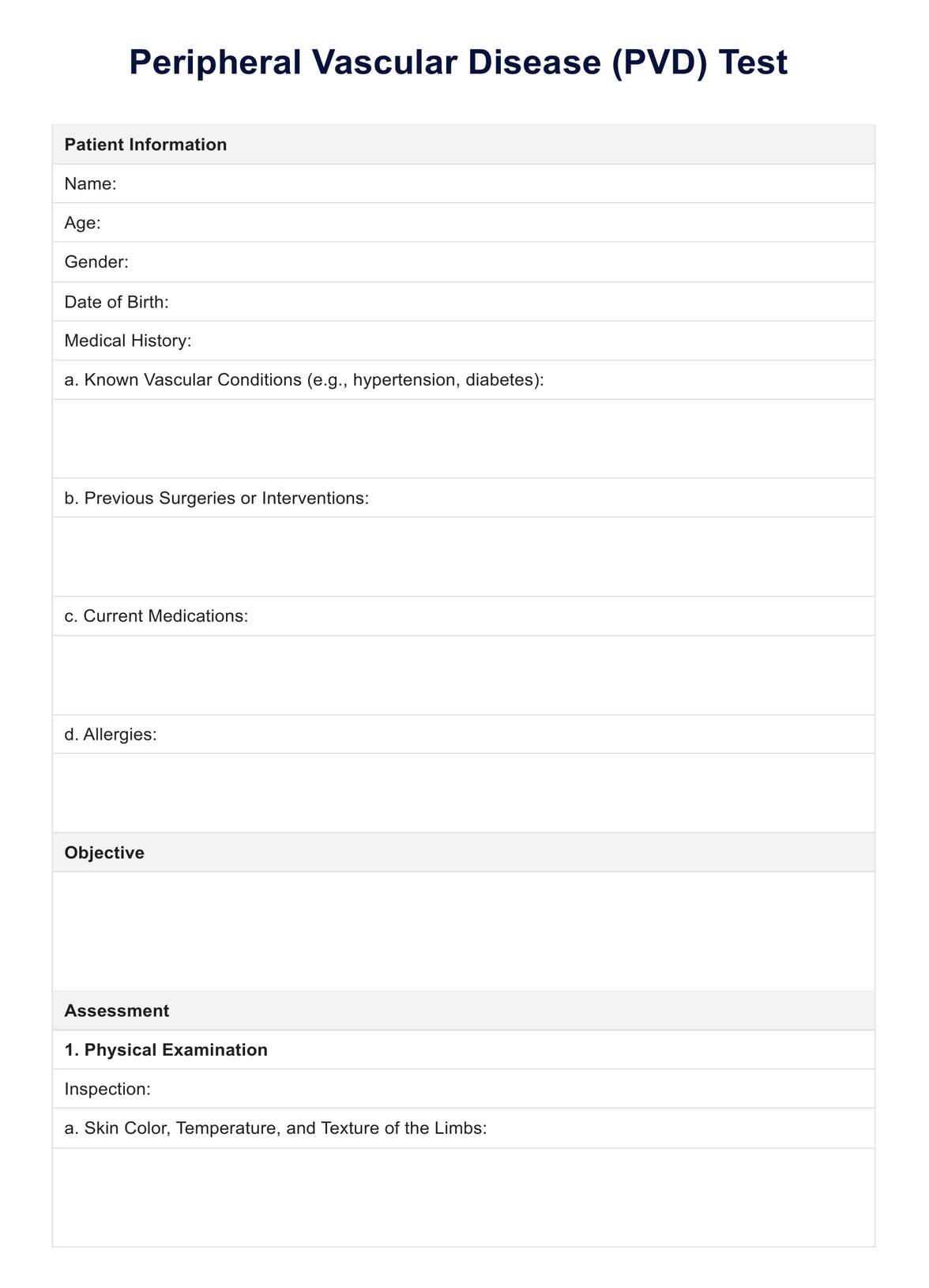PVD testing involves assessing the vascular status and perfusion of the limbs to diagnose Peripheral Vascular Disease, typically through physical examination, vascular imaging, and noninvasive tests like the Ankle-Brachial Index (ABI).

PVD Test
Discover the ins and outs of the PVD Test with our comprehensive guide and template. Learn about its purpose, procedure, risks, and more.
PVD Test Template
Commonly asked questions
Screening for PVD often includes measuring the Ankle-Brachial Index (ABI), which compares blood pressure in the ankle to that in the arm. Physical examination for pulse abnormalities and risk factor assessment also play vital roles.
Examination for PVD involves inspecting skin color, temperature, and texture, palpating peripheral pulses, assessing capillary refill time, auscultating for bruits, and performing noninvasive tests like ABI measurement and Doppler ultrasound.
EHR and practice management software
Get started for free
*No credit card required
Free
$0/usd
Unlimited clients
Telehealth
1GB of storage
Client portal text
Automated billing and online payments











